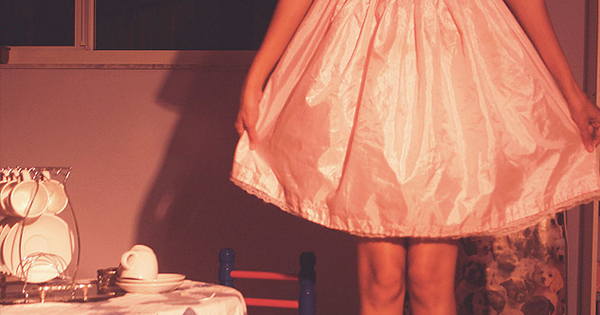
Among my trans girlfriends, there are those who don’t relate well with surface, who find putting together outfits and putting on make-up to be joyless chores, if not ordeals. Some of them wait months or years for hormonal changes to take effect before presenting publicly as female. Not me. In my years of crossdressing, despite not understanding what it meant, being in my female aspect gave me a sense of ease and completeness—at times ecstasy—like no other experience. As a child, all communication from the goddess came through symbols: the long hair of girls and women, my teacher’s legs in nylons, the patent leather Mary Janes of the cousin who lived with us for a year, radiating from the floor of her closet. These were talismans so powerful I thought if I touched them I’d explode.
I liken the difference to the craft of acting. Method actors, such as Marlon Brando, work from inside. They first connect with the internal life of a character, sometimes envisioning an entire biography, then manifest that connection through the lines and action of a scene. Classically trained actors, however, get their access from the outside. Lawrence Olivier was said to switch instantly into character as soon as the beard and spirit gum were applied, the hump of Richard III strapped on. Judging by the output of Brando and Olivier, both approaches work.
For whatever reason, I’m an Olivier, not a Brando. During childhood, if I didn’t see it on the outside, I wasn’t going to find it on the inside. But my only trans role models, if you could even call them that, came from paltry slivers of network TV in the ’60s and ’70s: when the castaways on Gilligan’s Island fell under a spell, and Mary Ann’s voice emerged shockingly from Gilligan’s mouth; when Grandpa on The Munsters concocted a potion to make him appear as the breathtakingly glamorous Marilyn Munster so he could go undercover and size up one of her suitors; when a trio of femme fatale casino swindlers in Vegas tried to skip town and the wig fell off the one who knew karate (“A man!” someone shouted), whereupon Dan Tana pummeled her face; when a slender man on a variety show transformed himself into Judy Garland, lip synching and dancing (on fabulous legs) to “Get Happy.” These were incredibly primitive approximations of “me,” yet they were all I had, and I seized on them, replaying them in my head ad infinitem. Had I grown up today with Transparent, Orange is the New Black, and YouTube, had I attended a school with a gender-neutral bathroom or seen the T installed at the end of LGBT, I have little doubt I would have zeroed in on my identity soon enough to take puberty blockers.
I had no access to the true trans role models alive during my childhood—April Ashley, Christine Jorgenson, Candy Darling, Sylvia Rivera. The one exception came in 1977, when Renée Richards, who’d fought for and won the right to play women’s tennis in the US Open, did a televised interview with boxing announcer Howard Cosell. The interview was brief, Cosell unusually gentle. Richards wore a white tennis dress, and I never saw her again. While I admire these pioneers for their bravery in the face of unspeakable danger and rejection, I’m even more amazed at how, bereft of outside reference points, they managed to locate who they were inside. I don’t know how they did it.

